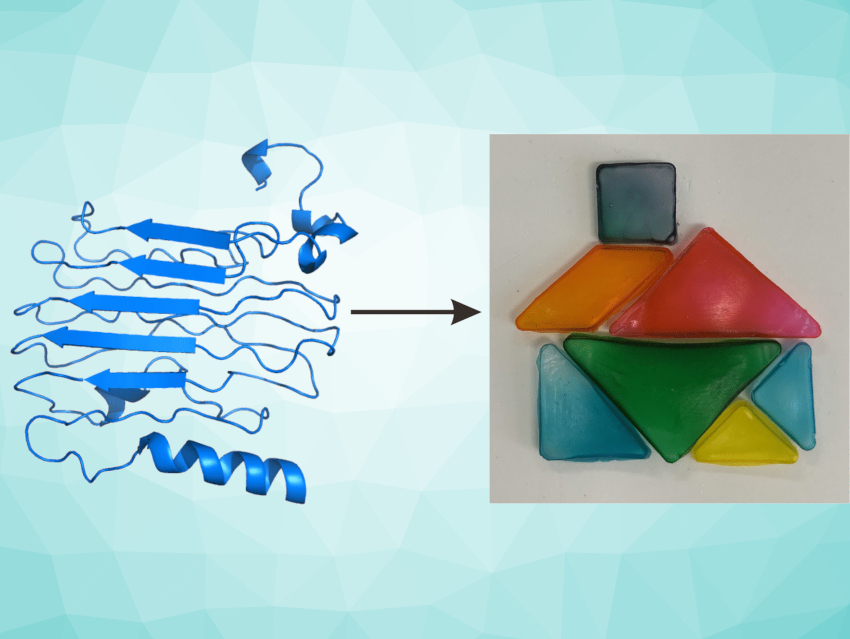More than eight million tons of plastic end up in the oceans every year—a serious danger for the environment and health. Biodegradable bioplastics could provide an alternative. Bo Wei, The First Medical Center of PLA General Hospital, Beijing, China, Jingjing Li, Yawei Liu, Changchun Institute of Applied Chemistry, Chinese Academy of Sciences, and colleagues have introduced a new method for the production of protein-based plastics that are easily processable, biodegradable, and biocompatible, and also have favorable mechanical properties.
Protein-Based Bioplastics
Whether in packaging or toys, mulch films or cars, plastics based on petrochemicals are ubiquitous—demand is rising, and so are the piles of garbage. Bioplastics based on natural materials like starch, or synthetic biomaterials like polylactic acid, have exhibited inadequate durability, biocompatibility, and/or biodegradability in most cases. In addition, they often require complex, energy-intensive processing methods and toxic chemicals.
The team introduced novel bioplastics with properties that can be tailored according to need. To do this they developed two lysine-rich proteins and produced them in bacterial cultures: “ELP” is a polypeptide similar to the connective-tissue protein elastin. It does not have defined folding, which leads to toughness and elasticity. “SRT” consists of ELP plus crystalline segments of a squid protein with a β-sheet structure.
Strong and Elastic
ELP (or SRT) is crosslinked with a polyethylene glycol (PEG) derivative by way of its lysine amino side-groups. (PEG is used in pharmaceuticals, among other things.) If the crosslinking occurs in water, the material can then simply be dried in a mold. The result is a tough, transparent, solvent-resistant bioplastic. Its mechanical properties can be varied by changing the proportion of PEG. This allows for the production of bioplastics with high mechanical strength at room temperature in any shape desired, and without toxic chemicals or complex processing steps such as liquefaction, extrusion, or blow molding. Their breaking stress exceeds those of many commercial plastics. One problem left is that they swell in water.
If ELP is crosslinked in a water/glycerol solution, the material gels into soft, elastic bioplastics. The team also used wet spinning to produce biofibers that are as strong as some biotechnological spider silks. The natural enzyme elastase completely degrades all of the new protein-based bioplastics.
New Generation of Ecological Materials
It is conceivable to make toys with this new, nontoxic bioplastic that can be dyed with food coloring. This material may also be used to seal wounds as it has hemostatic effects. Implants were completely broken down within a few weeks.
To store information, ELP could be polymerized together with peptides that have been programmed with codes by means of their specific amino acid sequences. The information could be read back through sequencing. This would allow for higher information density than is possible with DNA data storage.
- Biosynthetic Structural Proteins with Super Plasticity, Extraordinary Mechanical Performance, Biodegradability, Biocompatibility and Information Storage Ability,
Juanjuan Su, Kelu Zhao, Yubin Ren, Lai Zhao, Bo Wei, Bin Liu, Yi Zhang, Fan Wang, Jingjing Li, Yawei Liu, Kai Liu, Hongjie Zhang,
Angew. Chem. Int. Ed. 2022.
https://doi.org/10.1002/anie.202117538

![Synthesis of [c2]Daisy Chains via Mechanochemistry](https://www.chemistryviews.org/wp-content/uploads/2025/04/202504_RotaxanesWithSolidStateMechanochemistry-125x94.png)

